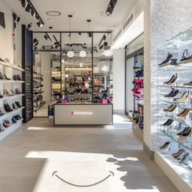Fading fast

Retail
411 week ago — 4 min read
The retail industry has used “same-store sales” (or “comparable store sales”) as a key indicator of a retailer’s health for decades. From where I sit, its usefulness is rapidly fading, if not bordering on irrelevance.
While it remains to be seen whether retail traffic declines will last forever, most traditional retailers will struggle to grow physical store sales in the face of the significant and inexorable shift to online shopping. With few exceptions, so-called “omnichannel” retailers are experiencing flat to slightly down brick-and-mortar revenues while their e-commerce business continues to grow 10-20%. The mostly moribund department store sector points to this new reality. While overall revenues are basically going nowhere, online sales now account for over 30% of total revenue at Neiman Marcus, over 20% at Nordstrom and Saks, and some 18% at Macy’s (according to eMarketer), with the percentage growing every quarter.
What we do know, and what’s important to grasp and appreciate, is that physical stores are critical drivers of e-commerce success and vice versa. For most retailers, a brick-and-mortar location sits at the heart of a brand’s ecosystem for a given trade area. Any retailer with a decent level of channel integration employs stores to acquire new customers, to serve, buy online, pickup in store orders (and returns) and to convert shoppers that start their shopping online but need to touch, feel or try on a product before buying. The decision of “digitally native” brands like Amazon, Bonobos, Warby Parker and others to open stores underscores this fact. Conversely, legacy retailers must be careful to avoid closing too many stores or they risk damaging the overall brand, slowing e-commerce growth and accelerating a downward spiral.
Customers shop brands, not channels or touch points. A robust one brand, many channels strategy requires management teams to understand precisely how the various marketing, experience and transactional channels interact to make a more relevant and remarkable whole. With this understanding, same- store sales performance may still have some utility, but “same trade area” performance–which accounts for all sales regardless of purchase channel within the influence area of a store becomes a far more interesting and useful metric. Critically, it also provides the basis for understanding the drivers of customer segment level performance at a more granular and actionable level.
Rapidly declining same-store sales performance may suggest the need for aggressive action, including shuttering stores. Unquestionably, the great deleveraging of retail store economics is cause for real concern. But without a broader view of how digital commerce and the in-store shopping experience work together, an obsession with same-store sales performance will inevitably lead to some very dumb decisions indeed.
To explore business opportunities, link with us by clicking on the 'Invite' button on our eBiz Card.
Article contributed by Steve Dennis for STOrai Magazine
View STOrai 's profile
SME Inspirations
Other articles written by STOrai Magazine
The Art & Science of People Pleasing in Retail
24 week ago
Most read this week















Comments
Share this content
Please login or Register to join the discussion